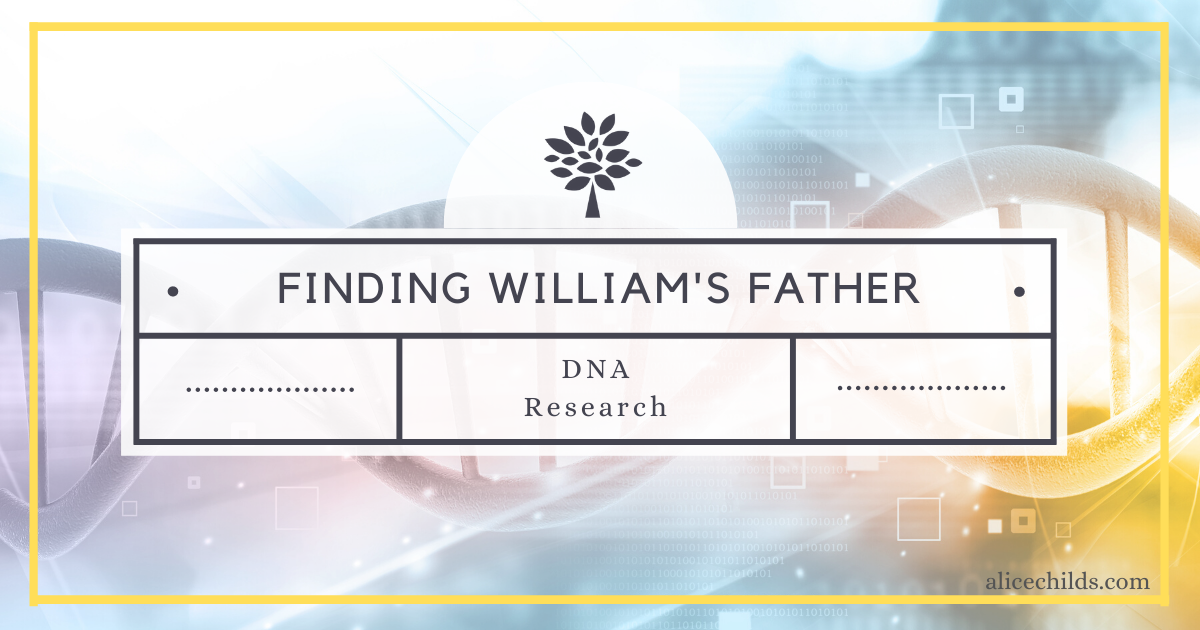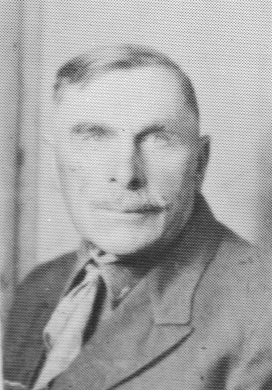
I have a 3x great-grandfather who seems to have disappeared into thin air. Only one thing about the story is certain: My 2x great-grandfather William Munford Stubbs never knew his father’s name.

There are a couple of different hypotheses about the mysterious father. One story states:
There is a bit of mystery about Ann’s first marriage. According to Harriet Paice, George Munford’s wife, Ann and William Stubbs wanted to marry; but, her family objected—so they eloped! Shortly after their marriage, William “went to sea”. None of the family seem to know what happened to him. Their son William, was born 23 June 1858 at Hethel, Norfolk. Ann was 24 years old.
“From the Waves of the Past: The Munford History for Ann Munford,” FamilySearch profile for Ann Munford KWJX-FG1.
No documentation has surfaced to corroborate this theory. Another story states that William Munford chose his own last name later in life. This would fit with the family legend that William’s mother Ann would never reveal the name of William’s father. In fact, when Ann and William immigrated to the United States from England in 1863, four-year-old William’s last name on the passenger list can be presumed to be Mumford [Munford], as indicated by a ditto mark beneath his mother Ann’s last name.
At RootsTech in February, one of my third cousins messaged me via the Relatives at RootsTech feature available to attendees through the FamilySearch Family Tree app. We met and talked about our shared ancestor William Munford Stubbs. My cousin’s father (who as a boy was acquainted with his great-grandfather William) had a lifelong quest to discover the identity of William’s father. My cousin’s father passed away without being able to solve the mystery, and my cousin is hoping to be able to continue his work. Ever since I participated in the Research Like a Pro with DNA course last fall, this project has been one I have wanted to take on, and talking with my new-found cousin inspired me to collaborate with her by diving into this project and using DNA as part of my research.
Fitting in an extra project has proven to be a challenge, but I recently decided to work on it in small chunks of time on Sunday afternoons or evenings. I will share my progress here, walking through each step of using DNA and traditional genealogical evidence to solve a research objective. While I fully realize there are some limitations that may prevent me from my ultimate goal of finding William’s father, I hope I will be able to make some great progress!
*Genetic Genealogy Standards require strict attention to protecting the privacy of living individuals, so throughout the series, all information for living individuals will be privatized by redacting their names and other identifying information.
Creating a Research Objective
The first step in the process was to write down my objective:
The objective of this research project is to use DNA and traditional genealogy evidence to identify the father of William Munford Stubbs. William was born 23 June 1858 in Hethel, Norfolk, England to Ann Munford. William married Isabelle Margaret Gavin 18 June 1875 in Parowan, Iron County, Utah and died 3 April 1934 in Parowan, Iron, Utah.
Limitations for the Project
It is important to make note of limitations that exist when conducting DNA research. Here are some of the limitations that might affect my ability to solve this mystery:
- Using my Dad’s DNA, autosomal DNA matches that might help solve the objective will be at least 3rd cousins. Because of recombination, some of the descendants of William’s father won’t show up as matches.
- Descendants of William’s father’s other children, if he had any, will be half-cousins because they will have a different mother than William does. I will need to remember this and be aware of shared DNA in half-cousin relationships.
- William’s father may have had no other children, meaning I will have to go back a generation and use 4th cousins, who will share less DNA and have a greater chance of recombination, leaving more cousins who may not show up as matches.
- Descendants of William’s father or grandfather may not have had their DNA tested.
- There is a chance that William’s father’s last name is not Stubbs. A Y-DNA test could point to a possible surname. However, candidates for Y-DNA testing may decline the test, and if taken, the test may prove inconclusive.
- Genealogical records that could corroborate DNA evidence may not be available, making a conclusion impossible.
Targeted Y-DNA Testing
My Dad has taken an autosomal DNA test with AncestryDNA so I will be using his test results for this project. Because some family stories state that William chose his own surname later in life, a Y-DNA test could help prove or disprove this story. My next step was to identify a candidate for Y-DNA testing. Finding a candidate was pretty easy to do by performing a surname search for Stubbs within my Dad’s AncestryDNA match list. With this search I was able to identify two direct male descendants that would qualify for Y-DNA testing. I messaged each of them through Ancestry’s messaging system, but have not yet heard from either of them. Because people don’t always log in to Ancestry on a regular basis and messages might remain unread for some time, I did a little sleuthing and was able to come up with a mailing address for one match, so I wrote a letter and put it in the mail this morning. I am hopeful I will hear back from him soon! I am tracking all correspondence with DNA matches in a correspondence log. My correspondence log is based on recommendations by Nicole Dyer of Family Locket in her article Using a Research Log in a DNA Research Project.
Uploading DNA to Other Sites
Ancestry allows the download of raw data from their site. My next step will be to upload my Dad’s DNA to other sites, so I can have a larger pool of matches to work with. I previously wrote an article about this process. You can read it here. I will work on this step during my next research session, followed by the next step: analyzing my DNA and traditional sources. Stay tuned to receive updates on my progress!


I love this project. Great list of limitations! I hope the letter reaches the man you sent it to and that he is willing. I’ve had some success by finding people on Facebook and then asking their younger relatives from the match list to ask their father/grandfather to read their Facebook messages. I’m excited to hear about your progress!
That’s a great idea Nicole. I’ll have to keep that in mind!
Thanks Sue!